Products such as medicines and household chemicals are often responsible for poisoning incidents. As per the World Health Organization, child-resistant packaging has provided with high success rates when it came to the prevention of unintended poisoning in children. Medicines, especially, cause the maximum cases of non-fatal poisoning in countries with middle and high income. Hence, specially designed packages are a crucial requirement.
What is Child-Resistant Packaging?
Child-resistant packaging, often known as CR packaging is a special packaging that manufacturers use to reduce the risk of children consuming hazardous materials. Child-resistant packaging for pharmaceuticals is made to be difficult to open. However, manufacturers design it in a way such that most adults can access the contents of the package. Package testing helps to determine if adults with disabilities and aged adults can access the packaging or not. Generally, manufacturers implement child-resistant packaging by using a safety cap. Safety regulation often requires the packaging of pharmaceuticals to include such caps. Prescription drugs, drugs that are sold over the counter, opioids, nicotine-containing consumables commonly come in such packaging. Besides caps and closures, blister packaging and even cartons have child-resistant variations.
Child Resistant Blister Packaging
Blister Packaging is one of the most commonly used packaging solutions in the pharmaceutical industry. They are low cost, have a small packaging footprint and provide great protection from the atmosphere. At the retail level, blister packaging has no risk of accidental disposal. Back in the 1970s, when child-resistant packaging first appeared in the market, it only came in one format. There was the bottle or the jar with a safety cap. Soon, blister packaging overtook them, because not only are they easy to manufacture, but blister packaging can also be easily made to be child resistant. In case of child-resistant blister packaging, manufacturers make use of a multi-layer backing. Along with aluminum, manufacturers also use PVC, PVdC, PE, PP, Aclar films and Coldform foils. This makes the packaging harder to open for children. However, adults can still open such packaging by peeling the back of the packaging, by pushing the tablet or the capsule through the backing or by both peelings and pushing through.
child-resistant blister packaging
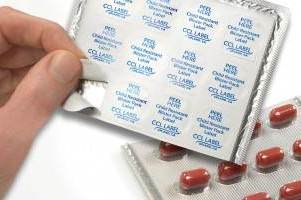
Newer packaging methods integrate the blister packaging with the external carton. The re-closable flap of the carton is attached with the blister so that the user can easily slide out the strip. The locking mechanism of the flap prevents children from access the blister packaging. The external paperboard carton provides more space for branding. You can read in detail about the types of blister packaging to understand better.
Child Resistant Sprays
Most aerosol sprays in the pharmaceutical domain comprise of nasal sprays. Making child resistant and senior friendly sprays are quite easy with the help of CR closures. Most nasal sprays come with an additional cover that conceals the spray head. Manufacturers use child-resistant caps to cover the spray head. The cover can have a common squeeze and turn mechanism.
Child-resistant packaging - spray over cap

A new mechanism uses CR over-caps with a bottom lift. In this case, the consumers open the cap, turns it upside down and pushes it through the bottom where it snaps into place. This raises the actual aerosol bottle with the pump. The entire bottle resides inside the plastic sleeve and the pump is only visible when the consumer pushes it up from the bottom. Another mechanism implements an over-cap with a top lock. Here, the user opens the cap, inverts it and snaps it on the top of the container again. When turned upside down, the cap can work as a spray head.
Manufacturers have used child-resistant caps and closures for quite a long time. Most of these caps come with a locking mechanism besides the standard turn to open or close mechanism. The three popular mechanisms are Turn and lift, Push and turn and Squeeze and turn.
Child-resistant packaging - caps & closures
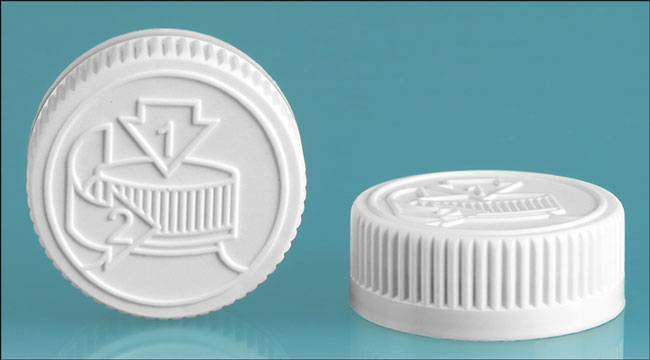
These caps come with a mechanism where the threads of the cap and the jar do not align unless the users disengage the locking mechanism. They can do this by the application of additional force, such as pressing the cap from the top or squeezing it from the sides. Depending on the design, the user has to apply some additional force to unlock the cap.
Child Resistant Sliders
Presto Products Company has introduced a child-resistant slider that enables the manufacturing of child-resistant pouches. It is a resealable pouch with a slider. The slider comes with a PTE or Press-To-Engage mechanism. The slider tab will align with the ridges once the user presses down on it. This is quite challenging to use for five-year-olds, but most adults, including ones with a disability, can use it with ease.
Child-resistant packaging - pouch sliders
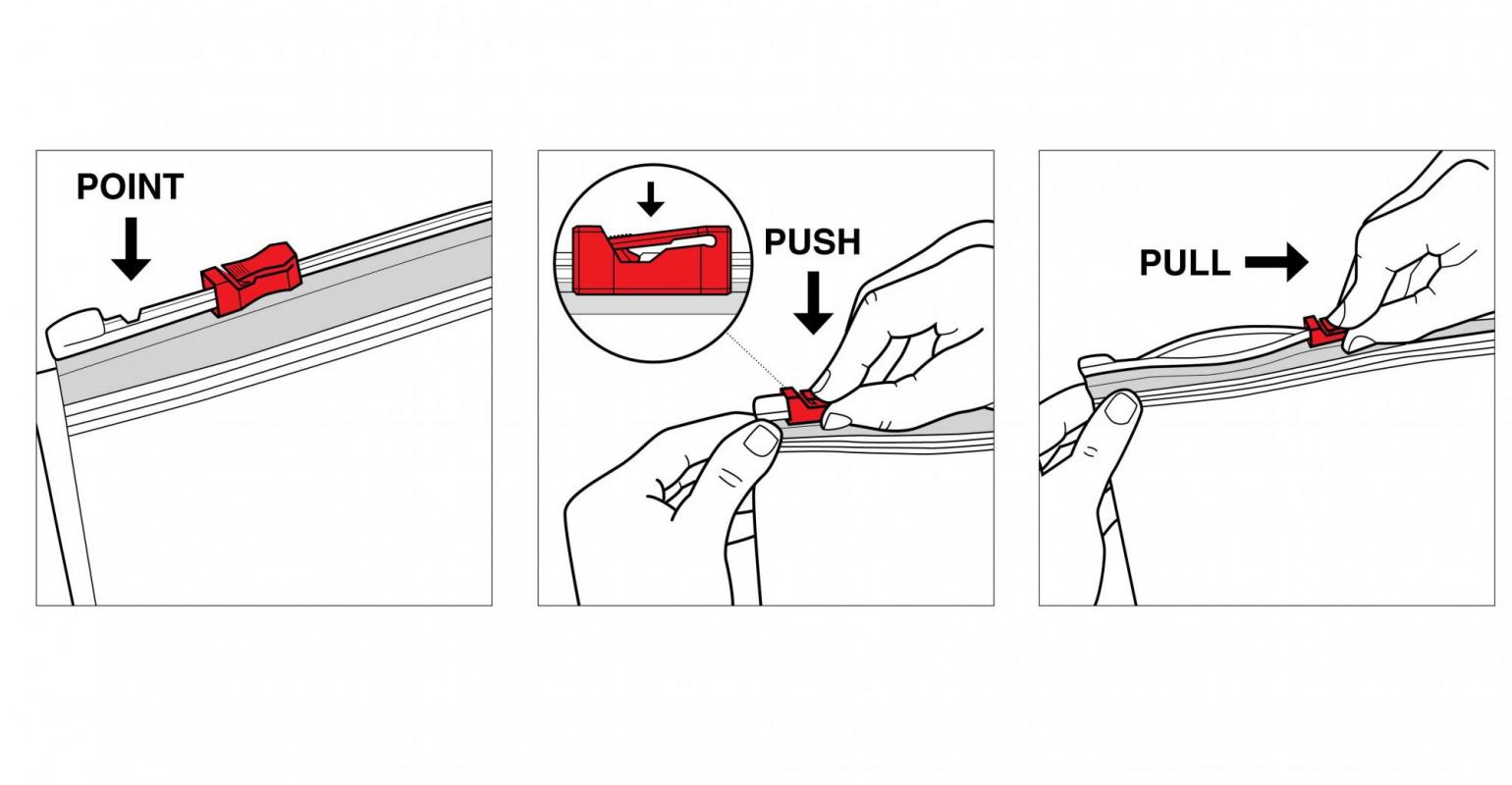
Re-closable CR Carton
Re-closable cartons are a low cost and eco-friendly way for packing pharmaceutical products. The reclosable cartons are often used for packing blister packs containing a unit dose of medicine.
Re-closable Child Resistant Carton
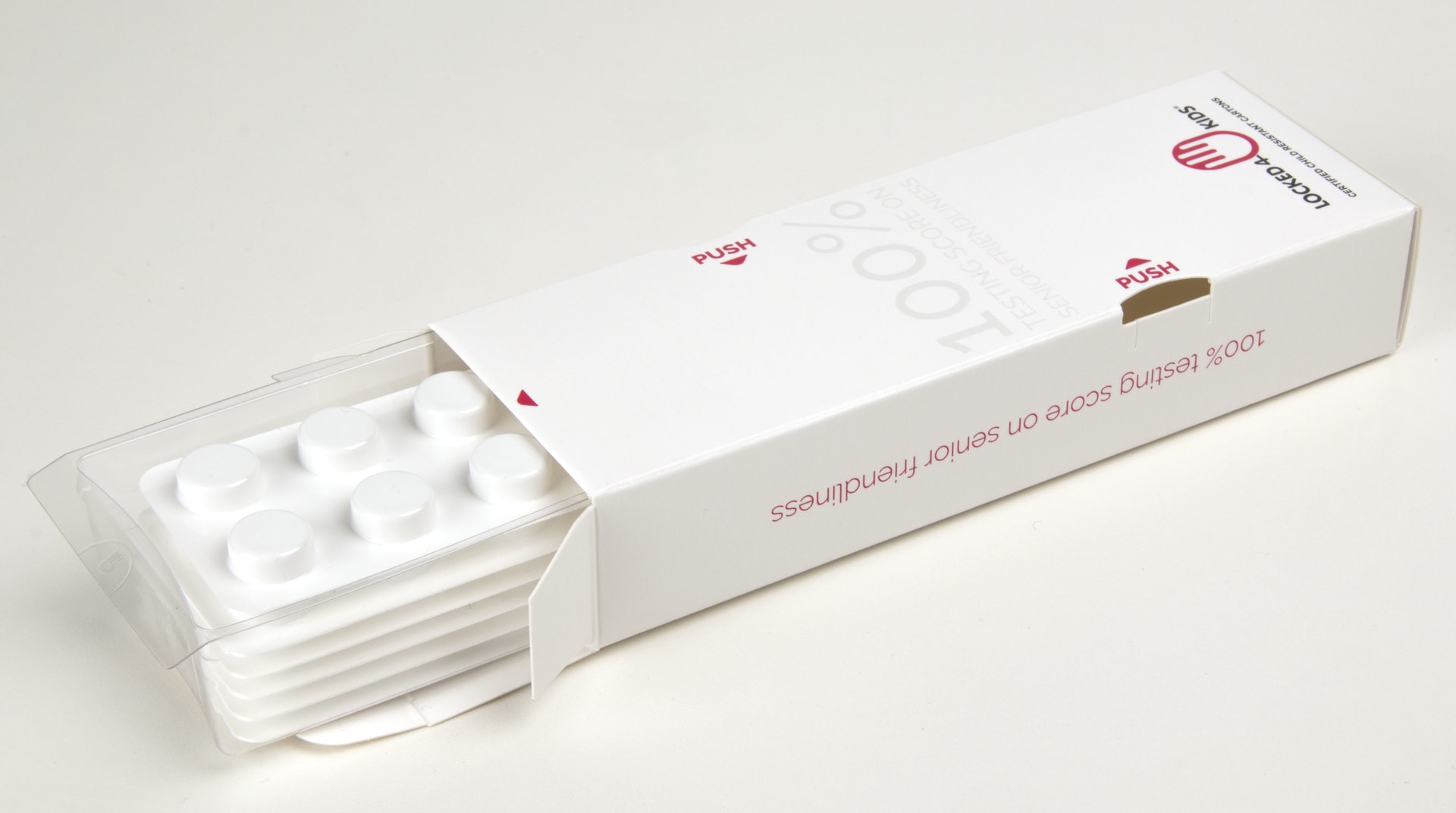
Locked4Kids
Locked4Kids is a proprietary carton design that consists of a reclosable carton and a plastic tray. The plastic tray contains medicine. It can be blister packs, syringes, gelatine coated capsules or medicine in any other form. The plastic tray contains hooks that attach it to the cardboard box from the inside. The box itself contains a plastic film lining for tear resistance. To unhook the plastic tray, one has to push the carton inwards at two push points that are located diagonally. This unlocks the plastic tray and one can slide it out completely.
Locked4Kids- Child-resistant packaging
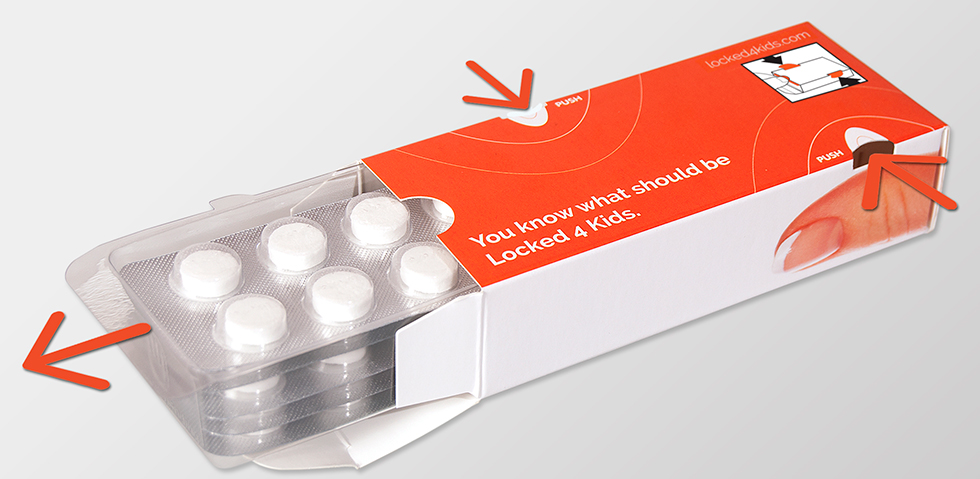
Medlock EZ
Another CR carton design is Medlock EZ. It comes with blister packs packed inside paperboard cartons. These cartons come with two push-points at one end of the carton. The blister strip is locked inside the carton and the user can disengage the lock by pushing down on the two push-points while sliding out the blister tray.Cartons are highly versatile and offer a lot of freedom when it comes to design. There is ample space to print product information and branding. Moreover, manufacturers also get a lot of freedom while choosing the printing technology for printing the cartons.
MedLock-EZ-Family - Child Resistant Packaging
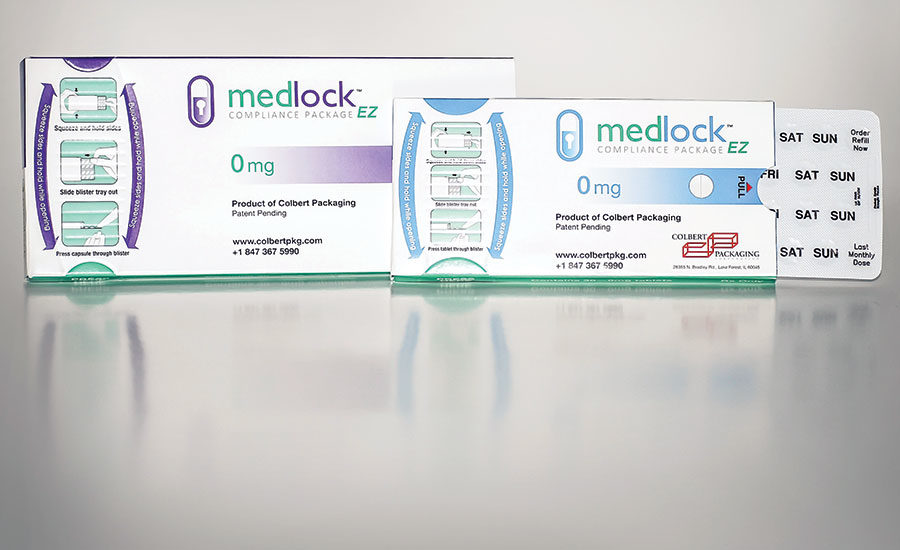
Bottom-line
Child resistant packaging is improving constantly. Although there are no strict child-resistant packaging regulations, innovations in packaging are trying hard to prevent cases of unintentional poisoning in children at the same time allowing the elderly to get access to their medicines. One of the major challenges of child-resistant packaging design is that it should be easy for the elderly and hard for children. For easier access, adults often decant their medicines in unsafe containers. Most modern child-resistant packaging tries to address this issue as much as possible, but then again, it is not possible to get a child-resistant packaging without sacrificing some convenience.
Request A Quotation